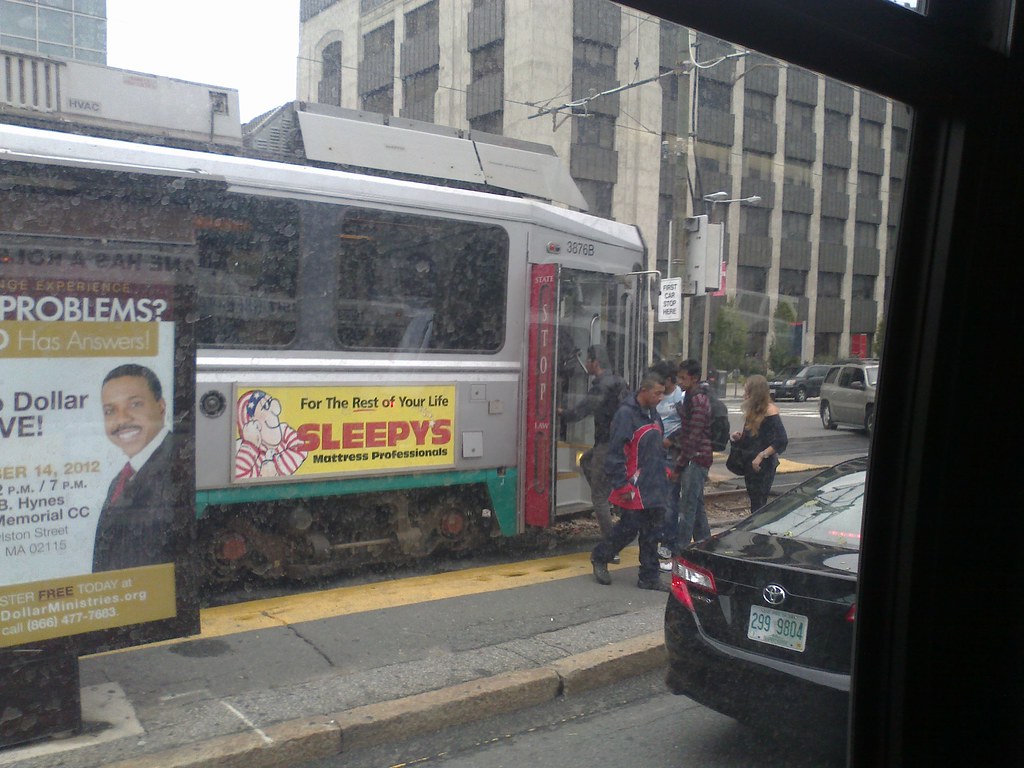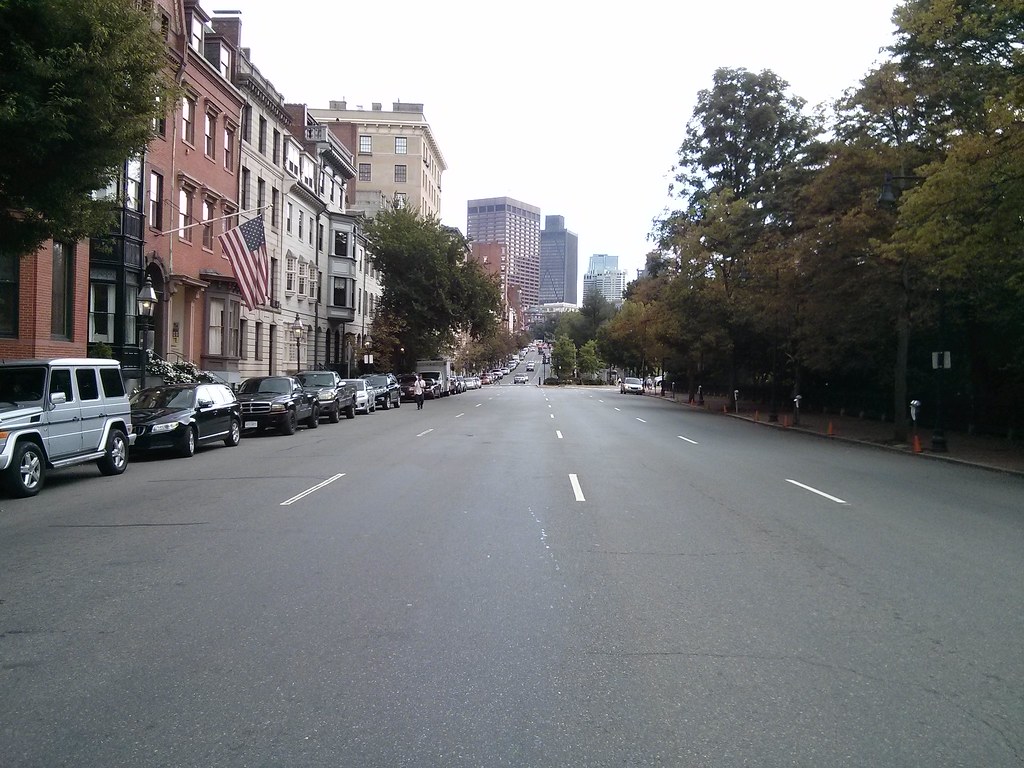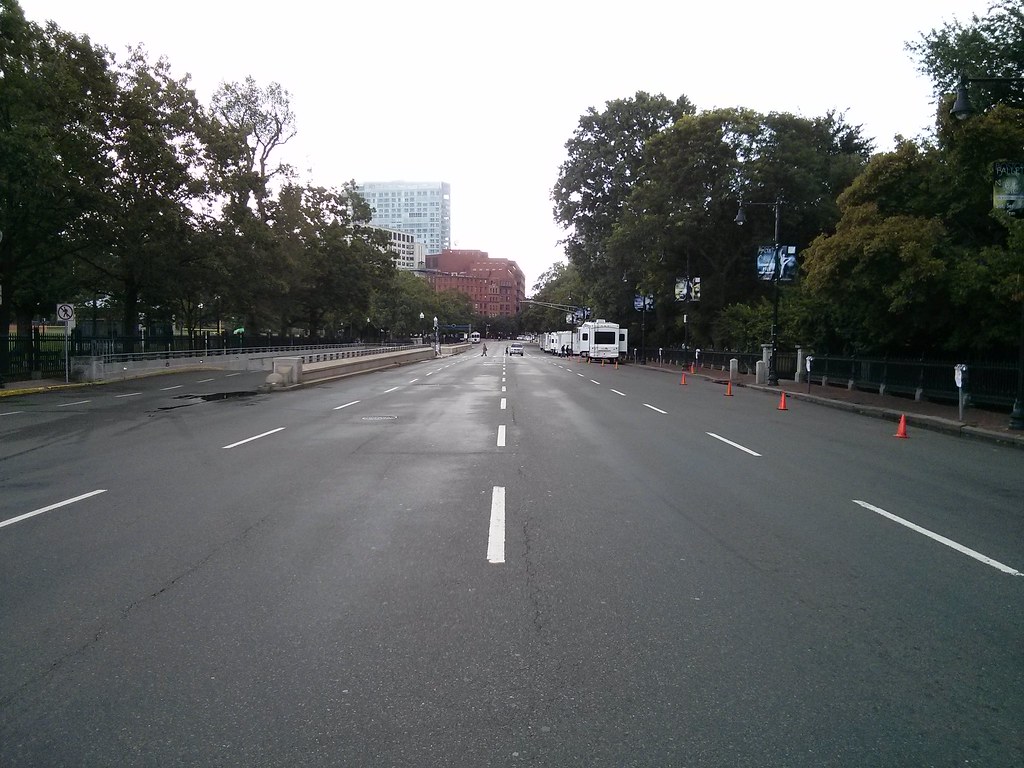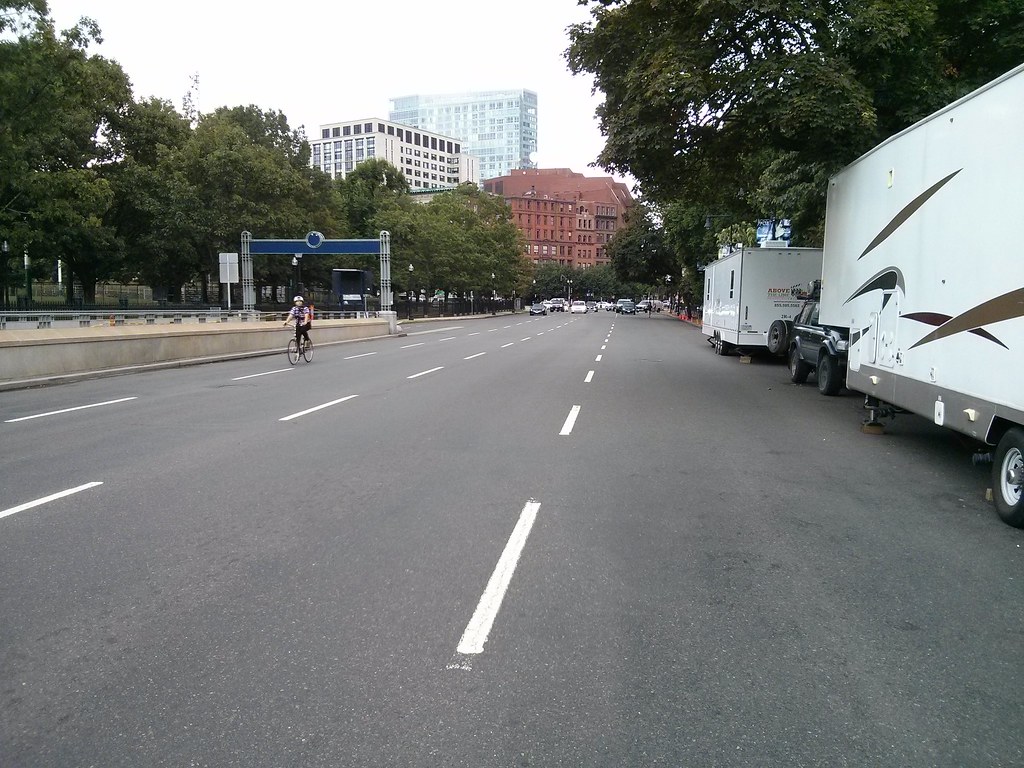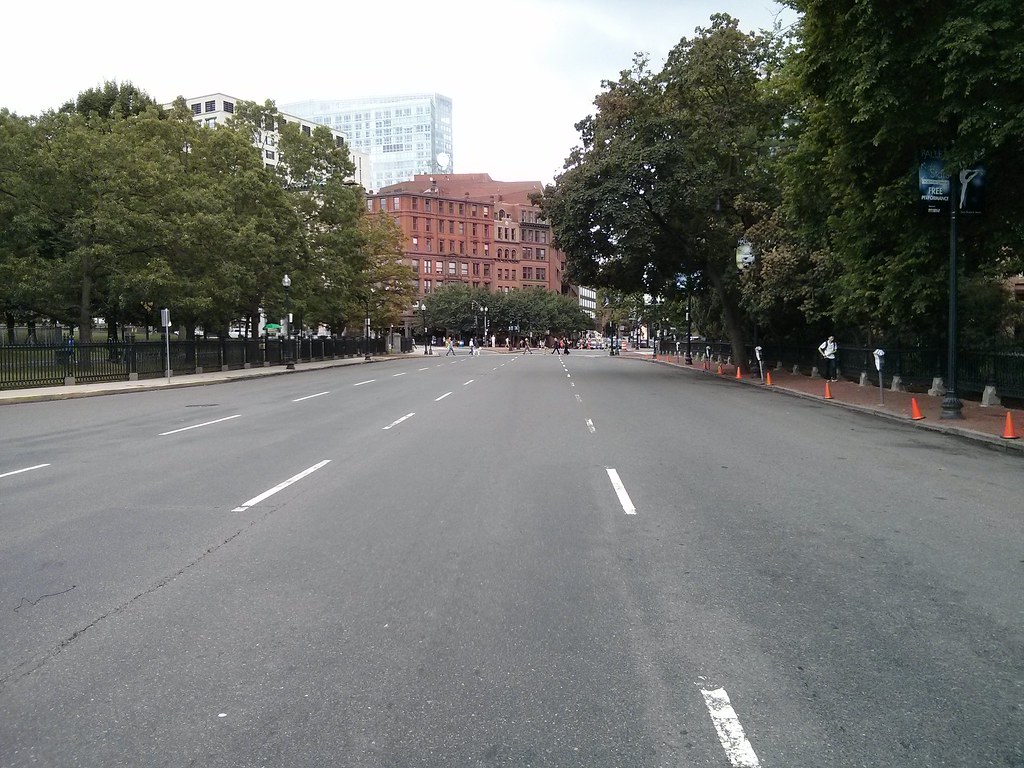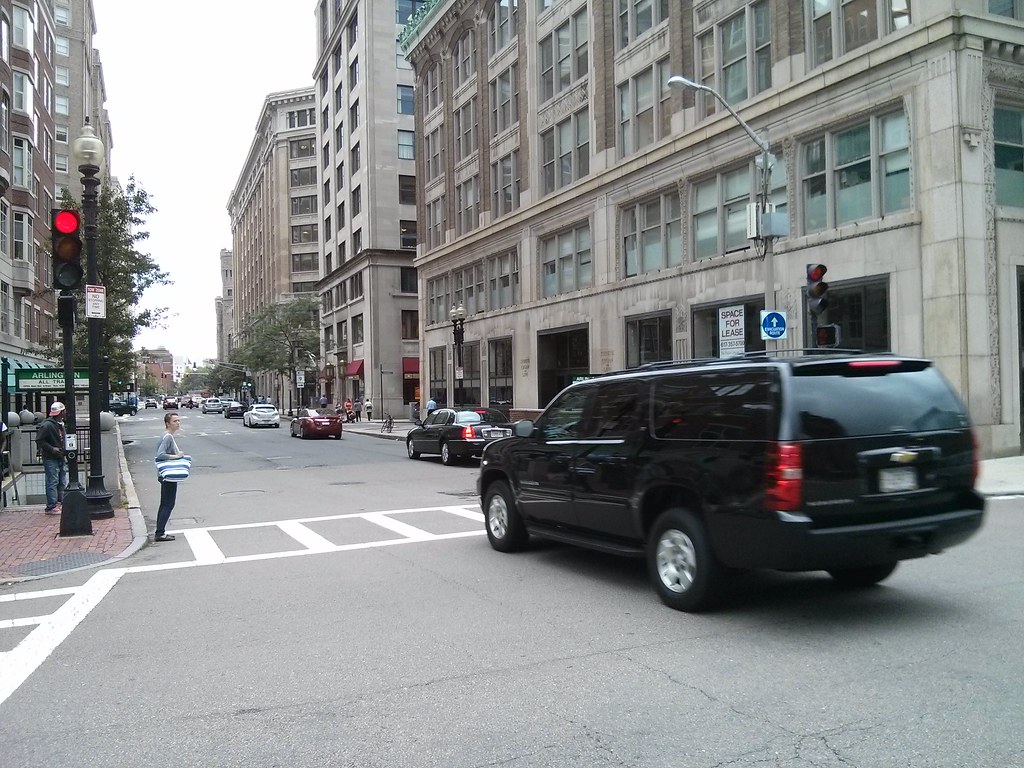There are so many flaws in Tom Keane's
most recent column for the Globe, that it is almost too easy to pick it apart. Take the first sentence:
CAR-FREE condos and apartments, the latest fad in residential living, are really little more than a gimmick: good for greens and developers, perhaps, but bad for residents.
The "latest fad?" I suppose that Tom believes that 19th century apartments were built with parking spaces? A little bit of history tells us that minimum parking requirements began with the 1950s zoning codes, a fad of its time, and the result was decades of disaster and urban decay. Then there's a little shot at people who live without a car: according to Tom, they must be either those wacky, crunchy "greens" or some market cooked up by sneaky, greedy developers. According to Tom's reasoning, these dastardly developers are just itching to dump millions of dollars creating a product that nobody will buy.
Thus, real estate developer Related Beal LLC is now proposing to create 175 units near TD Garden without adding in any new spots.
There’s a certain sleight of hand to the idea, since residents wouldn’t have to abandon their cars. As Related Beal acknowledges, it’s hoping to piggyback off of existing nearby parking. So this isn’t actually a car-free building as much as it is one that dumps the problem on someone else.
I feel strange explaining the concept of a market to someone as old as Tom Keane. The idea that residents could rent or purchase a parking space in a nearby garage should not be that difficult to grasp, and it's not much different from the many other transactions which take place between residents and local businesses. For example, most apartment buildings are not constructed with grocery store requirements. However, most people seem to understand that when a resident wants a bottle of milk, they can walk down to a nearby store and buy one. We do not need to build "minimum grocery store requirements" into the zoning code because those products are handled perfectly well by normally operating markets. And parking spaces are no different. They are just one type of land use, among many, that can be purchased or leased on the real estate market.
But suppose new buildings truly were car-free, with residents somehow compelled to give up their cars? A few might be persuaded to do so, but in the long run such a proposition would run headlong into one big problem: Even in Boston, people need cars. Manhattan, a uniquely dense and compact island, can get away with car-free living. Boston, spread out and part of a much larger metropolitan area, cannot.
Well, I just pointed out that there is nothing stopping a person from renting space for their automobile, much like they rent space for their bed and belongings. But the second part of this paragraph is hilarious. It makes me wonder if Tom has ever actually visited New York City. Actually, I'm starting to wonder if this former Boston city councilor has ever visited Boston, a city that prides itself on being a "walking city" with a compact urban area. Manhattan, just one piece of NYC, is much larger than Boston proper. Yes, that borough is densely populated, unique, and "can get away with car-free living." Boston is also densely populated, unique, smaller, and has many residents who "get away" with car-free living despite Tom's protestations.
As much as some may denounce the automobile, almost all of us own one — about 91 percent of American households, according to the US Census Bureau. In Boston, as in other cities, the numbers are lower, with only 63 percent of households having a car.
Tom gets weird here: it's true that 91% of American households own a car. Well, so what? 99% of American households don't live in downtown Boston! What's the relevance of choices made by people living in Marion, Ohio to a development project in Boston? Approximately nil. But let's move on. It's true that according to the American Community Survey, approximately 63% of Boston city residents have access to a car. That number is more relevant, and significantly lower. What's even lower: the number of residents
with access to a car when you focus on the neighborhoods around downtown Boston.
- Beacon Hill census tracts: 33%, 40%, 47% have access to a car
- West End census tracts: 50% have access to a car
- North End census tracts: 26%, 31%, 33% have access to a car
- Waterfront census tract: 40% have access to a car
- Leather District census tract: 43% have access to a car
- Chinatown census tract: 27% have access to a car
All of these numbers are significantly lower than 63%, the citywide rate, because the citywide numbers include some extremely suburban areas such as West Roxbury and Hyde Park, where the car access rate can exceed 95% in some tracts! But we're not talking about development in West Roxbury. We're talking about development on the Shawmut peninsula, which has been an urbanized settlement for centuries, long before the invention of the automobile. And it continues to be place where people live with low rates of car access.
Sometimes that’s an income issue; buying and maintaining a vehicle is expensive. Still, there are many city dwellers — mostly younger people — who choose not to have a car as a lifestyle decision. They can get to work without one, and find it easy to walk or bike their way around town.
Good for them. But merely because someone chooses not to have a car right now doesn't mean things won’t change. Green intentions notwithstanding, as life goes on it becomes increasingly likely a car will come into the picture.
Living without a car is the norm for the majority, in some cases, the super-majority, of people living today in central neighborhoods of Boston. But according to Tom, it must all be either poor people, young hipsters, or environment-saving die-hards. I have trouble believing that 70% of the North End, 60% of Beacon Hill, and 73% of Chinatown is populated in this narrow fashion. But this is essential to Tom's argument, because in his view, they can all be dismissed, because they are not "real Bostonians." That's the undertone of his argument, in any case. Let's look at the text:
The average American, for example, changes jobs frequently (well more than 11 times during a working lifetime, according to Bureau of Labor Statistics data). A new resident of a car-free building might be working just down the street. But two years later, another position might beckon, located, say, at one of the many office parks that have sprouted up along Routes 128 and 495. [...] More likely, the once car-free resident will end up buying a car and moving to a place that’s more auto-friendly.
Put aside the falsity of using "average American" here. And let's also put aside the likely possibility that a new job can easily open up in downtown Boston just as much as it might on the highway belts. Suppose this hypothetical resident changes to a job located on the Route 128 belt and it's not transit accessible, so they are forced to buy a car. And then they have a choice to make: either rent a parking space, or move to another home where they will also rent a parking space (but possibly cheaper).
So... what's the big deal, Tom? People make this kind of decision about their life all the time. There's no Commandment that states: "Thou shalt not have to make any difficult decisions about the cost of parking." The cost of housing and the cost of transportation -- which, for cars, includes parking -- is a factor in just about everyone's living decisions.
We live in a free country, free as in liberty, not free as in "free parking." That means we're supposed to have the ability to make choices. That also means we accept the consequences of those choices. If I choose to live in a building with no parking spaces, then that means I must later choose to rent a parking space if I choose to buy a car. Not much different from choosing to live in a 1-bedroom apartment. If I later decide that I want a second bedroom, then I need to either rent one, or move to another apartment which has one.
Then too, as people couple up or have kids, the need for a car rises. In Boston, most of those without cars are singles — fully 50 percent. But as household size grows, the rate of car ownership climbs to 75 percent. Anyone with children can understand why; parents spend their days shuttling their kids from playdates to school to sports to after-school activities. Cars are a necessity. By making it a hassle to own one, we push families out to the suburbs.
Aha, now we get down to it. According to Tom, it's impossible to have a family without a car. Well, not so impossible that 25% of car-free households do it. But impossible, nonetheless! Obviously, there were no families prior to the invention of the automobile. Humans sprang fully formed, with 2.5 children and a home with a white picket fence, from the bowels of Henry Ford's Model T plant.
I kid, but let's take his paragraph apart and see the real driving force here: "
Anyone with children can understand why; parents spend their days shuttling their kids from playdates to school to sports to after-school activities."
That's the nub. Tom Keane is fully committed to the idea that parents must spend their days shuttling their kids between social and educational activities. It probably has never occurred to him that the reason why parents are forced to shuttle their kids around is because they are growing up in a suburban environment where it is unsafe to travel in any other way but a car!
We, as a country, have spent much of the latter half of the 20th century building a living environment which is downright hostile and dangerous to children: suburban sprawl. Wide roads, desolate stretches, miles of nothingness between life. There is, indeed, only one way to traverse these deserts, and that is a car. So, if Tom Keane were writing about some development project out in the boonies, and not in the heart of the city of Boston, he might have a point.
But we're talking about development in a densely populated urban area. A place which is known for its walkability. A place where the majority of residents already live without cars. Let's think about context: the prescriptions that apply to sprawling subdivisions don't make any sense at all in middle of Boston. The lifestyle of parents in faraway exurbs is not comparable to that of parents in a compact city. One final claim:
Cars are a necessity. By making it a hassle to own one, we push families out to the suburbs.
Cars are not a necessity. We are not "making" it a hassle to own one. That "hassle" is just part of the nature of living in an urban neighborhood. It will never be like living out in the suburbs, and no amount of parking garage construction will ever change that. Face it: if a family wants the suburban experience, then they will end up moving to the suburbs no matter how much you try to bend over backwards to squeeze cars into the city. Meantime, you will damage the quality of life for families that are trying to live in the city. We can't compete while playing by the suburban rulebook. It's impossible.
What the city can offer is an alternative to suburban or exurban life, and yes, that extends to families as well. In the city, you have a chance to build an environment that values human life more than automobile convenience. In the city, you don't need a big backyard because the shared public space, the parks, the streets, the freedom of the city, gives you a much more interesting and diverse place to be. And that applies to children as well, who don't need to be "shuttled" by private vehicle to every place in their lives, but could actually attend their activities by walking around the local neighborhood, and learning to be self-sufficient. This is how urban neighborhoods have functioned, successfully, throughout history. This is the advantage that urban neighborhoods have over suburban neighborhoods, and it serves nobody any good to throw it away.
Minimum parking requirements are a failed, urban renewal-era experiment which are leftover from the bad old days. It is long past time to end them, and start focusing on building great urban places which won't make people feel like they need a car to escape.













